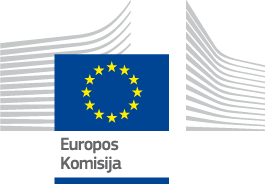

Good Practice Method
The Regional Government of Galicia offers an inspirational example of how to plan CLLD implementation in advance to ensure FLAGs remain operational from one programming period to another. This has helped to safeguard the local dynamic and credibility built up by the FLAGs and ensure funds are quickly available for new projects in the new period.
In many countries when a programming period comes to an end, FLAGs face serious difficulties to maintain the momentum and trust built up as a funding gap and lack of certainty regarding re-selection leads to a freeze in most FLAG activities. In Galicia, the transition from 2007-2014 to 2014-2020 was well planned to avoid such disruption and ensure a continuous presence of the FLAGs.
The key implementation steps are illustrated below, along with the timeline followed. Galicia did not wait for the national Operational Programme for the EMFF to be adopted before launching their work.
| 2015 | |
|---|---|
| April |
Call published for FLAG candidates for the 2014-2020 period (2007-2013 FLAGs still operational) |
| June | 8 FLAG candidates submitted |
| July | 7 of the 8 candidates approved and preparatory support foreseen for preparing their strategies |
| November |
|
| December | Payment of preparatory support transferred to the 7 FLAGs that developed a strategy |
| End of eligibility of FLAG running costs for 2007-2013 period | |
| 2016 | |
| January | Approval of the 7 FLAG strategies |
| February | 7 FLAGs contracted and running costs delivered (50% of first year’s running cost budget) and management rules and procedures for FLAGs finalised |
| June | First calls for projects published |
| July | 200 projects received by the 7 FLAGs |
| September | 115 projects selected by the 7 FLAGs |
| October | First round of projects (99) formally approved by Galicia for implementation |
| 2020 | |
| First half | Preparations for the next period (starting in 2021) expected to start |
| end December | FLAG running costs and operational will continue to be eligible |
Demonstrating recognition of the important work of the Galician FLAGs and supporting them to remain operational and active between funding periods. This has been fundamental for preserving the credibility of the FLAGs and ensuring that they can provide a continuous service to their areas.
This kind of advance preparation should be possible in most Member States where there is the will and commitment to keep the FLAGs in place between programming periods.
National and/or Regional authorities can keep FLAGs operational between funding periods if the selection process of the new groups is planned in advance. In regional countries, good communication and trust between the regional and national level is fundamental as much progress will have to be made before adoption of the national OP. For this reason, regular communication with DG MARE is also fundamental.
Experience in programming CLLD and capacity to absorb knowledge and experience from other regions, Member States and European support unit.
€191 000 (approximately €24 000 per FLAG) was paid from Galicia’s Technical Assistance budget for preparatory support for strategy development. The eight FLAGs have an average budget of €6.5M each.
| Timeframe of implementation | From Apr 2015 to Feb 2016 |
|---|---|
| Sea Basins |
|
| Type of area |
|
| Theme |